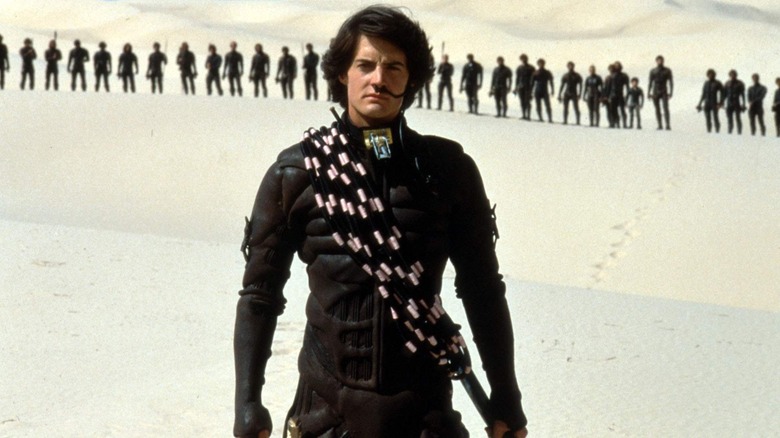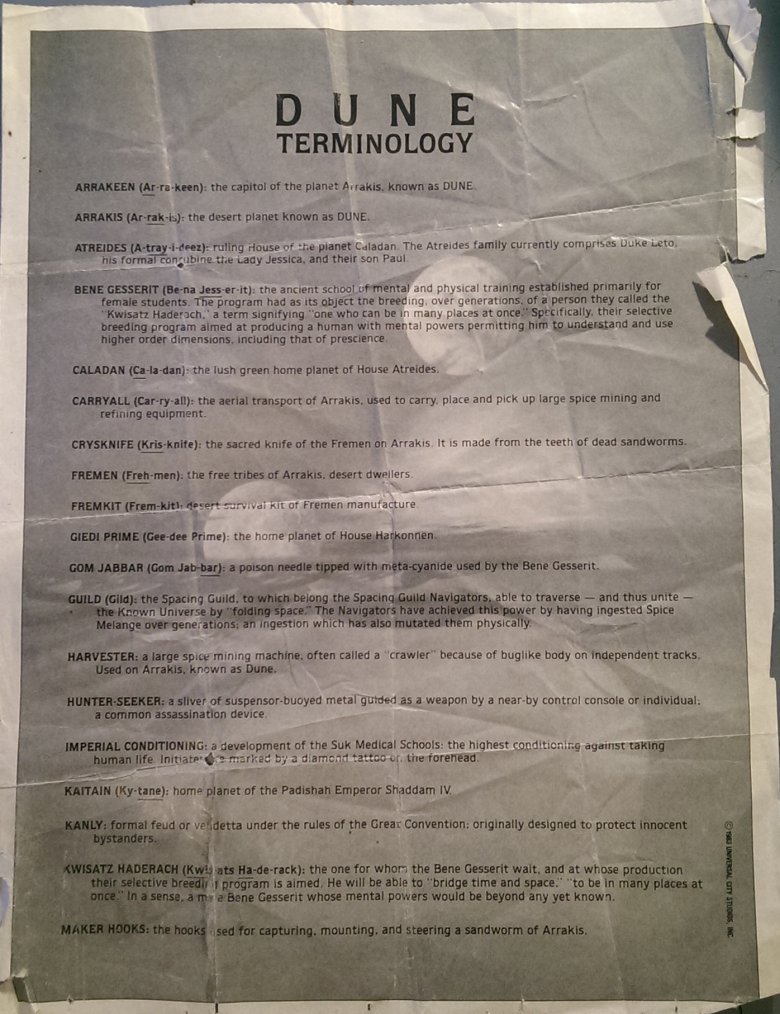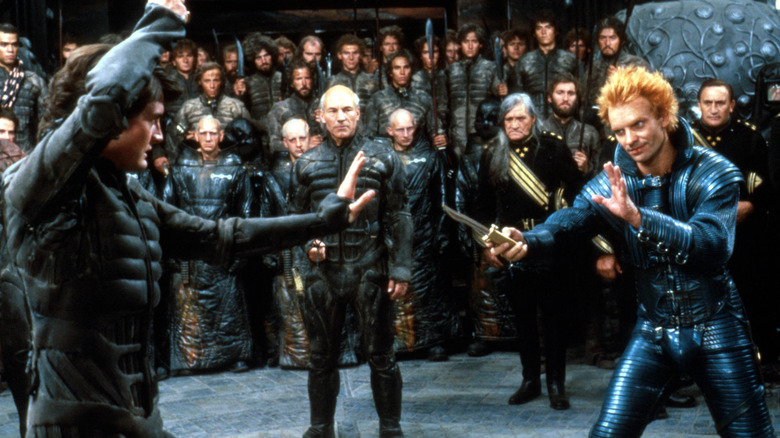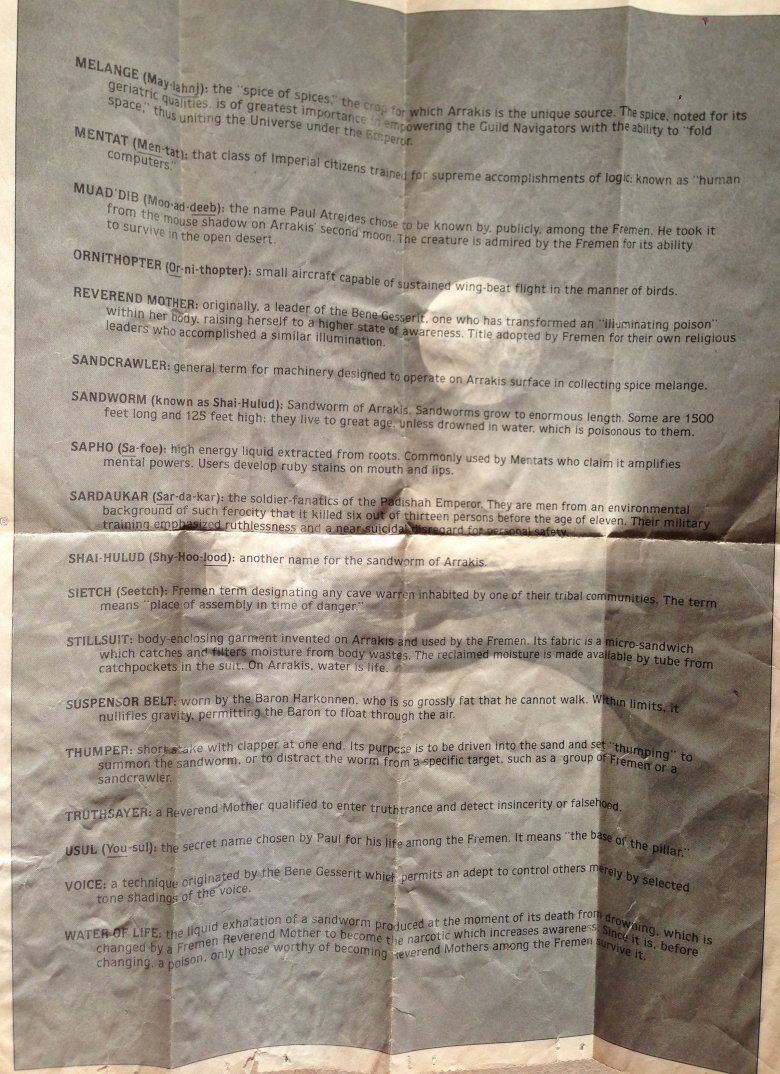Here's The Dune Glossary For The David Lynch Adaptation Of The Sci-Fi Epic
"Dune" hits both theaters and HBO Max tonight, but this isn't the first time someone brought Frank Herbert's sci-fi tome to the big screen. Back in 1984, David Lynch wrote and directed a "Dune" adaptation starring Kyle MacLachlan. The hope was that the film would be the next "Star Wars," and sequels were planned. But Lynch's "Dune" was a box office flop, grossing only grossing $30.9 million against a $40 million budget. But in the years since its release, Lynch's take on "Dune" has become a kind of cult classic – it even recently received a great 4K Blu-ray release from Arrow Video.
Lynch had never read "Dune" before he took the directing gig, but he was intrigued with all the strange new worlds he might be able to build. Unfortunately, "Dune" proved so impenetrable that Lynch lost control of the project. The filmmaker did not have final cut, which lead to all sorts of behind-the-scenes problems. Lynch had a monumental task: he had to pare down Herbert's dense mythology to be more palatable to general audiences. One solution involved voice-over narration from nearly every character, giving us insight into their minds (a concept Terrence Malick would later adopt in a more poetic, successful fashion). Another solution: a full glossary of the confusing "Dune" terms, handed out to some select audiences. With Denis Villeneuve's big new "Dune" adaption arriving, it might be helpful to take a gander at the 1984 glossary, just in case you need a cheat sheet yourself.
Dune Glossary Page 1
Say what you will about David Lynch's take on "Dune," it's unique. I've seen Denis Villeneuve's new "Dune" movie, and while it's more successful than Lynch's version, I also have a soft spot for what Lynch did. Villeneuve's movie is bigger and more serious, but the weird, otherworldly tone that Lynch brings to his adaptation is fascinating.
But Lynch's take is also nearly impenetrable – something everyone involved with the film was keenly aware of. Why else would they release a glossary of terms? That's not something that happens often. Images of the glossary for Lynch's "Dune" found their way online a few years ago, and I'm sharing them with you now that the new "Dune" is almost here.
Here's the first page.
Here we find such terms as "HUNTER-SEEKER: a sliver of suspensor-buoyed metal guided as a weapon by a near-by control console or individual; a common assassination device," and "KANLY: formal feud or vendetta under the rules of the Great Convention; originally designed to protect innocent bystanders." I have to say: I love that the explanations of terms here need explanations of their own. It's like a deep rabbit hole of confusion.
Dune Glossary Page 2
It probably would've made sense to limit the "Dune" glossary to one page. But "Dune" is so incomprehensible that they had to expand the glossary to two pages, with the second page of terms appearing on the back of the first page. Here it is.
Page 2 includes such important terms as "SANDWORM (known as Shai-Hulund): Sandworm of Arrakis. Sandworms grow to enormous length. Some are 1500 feet long and 125 feet high; they live to great age, unless drowned in water, which is poisonous to them," and "USUL (You-sul): the secret name chosen by Paul for his life among the Fremen. It means 'the base of the pillar.'" I do think it's interesting that some of these details could be considered spoilers – but spoiler-phobia wasn't really a thing back in 1984, so no one was too concerned.
Anyway, with the new "Dune" opening tonight, October 21, 2021, this glossary might come in handy. Feel free to print it out, get it laminated, and then refer to it anytime someone says something in "Dune" that you don't understand.




